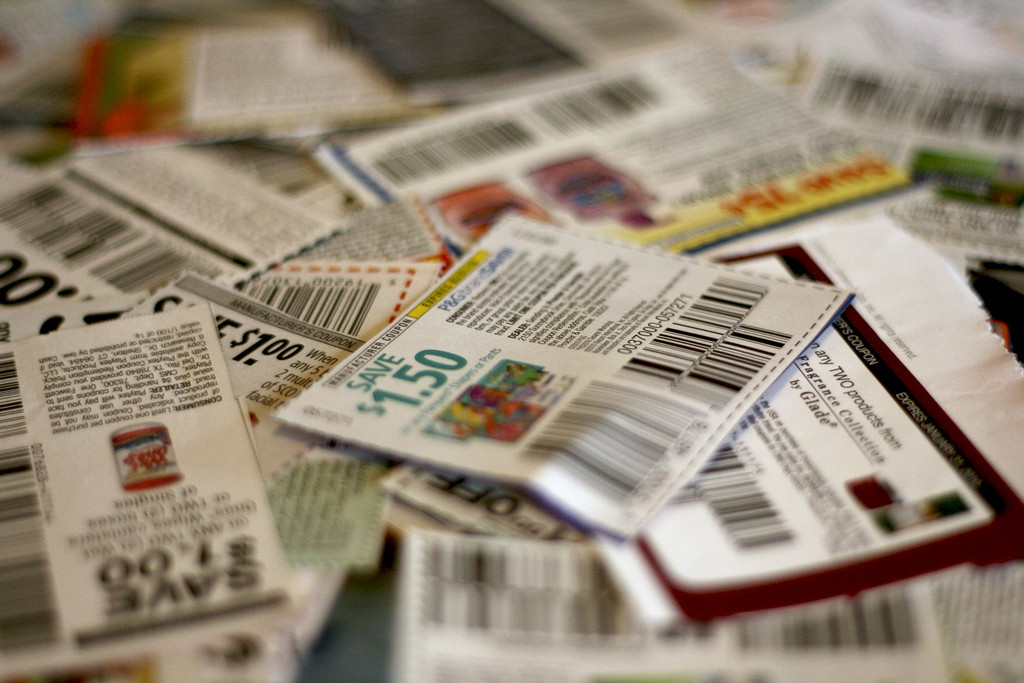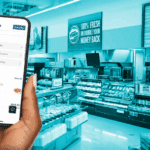It’s been the same story every year recently – coupon distribution is way down, coupon redemption is way down, and the only thing likely to reverse the trend is a severe economic downturn. Well, new figures show that once again, coupon distribution is plummeting and coupon redemption is collapsing. But the severe economic downturn that could reverse this troubling trend is now upon us.
So… be careful what you wish for?
Typically, annual coupon statistics about the number of coupons issued and redeemed are released shortly after the new year. We got a hint earlier this year that 2019 wasn’t looking great. But last year’s figures were apparently so depressing and abysmal, the full picture is only now starting to trickle out. If, however, there’s a bright side to the release of historically-low 2019 figures in the middle of the 2020 coronavirus pandemic, it’s that coupon use is already starting to perk up.
First, the bad news. Couponing, which had already been in something of a free fall, sunk last year to levels we haven’t seen in decades – and, by some measures, ever. According to 2019 figures from Inmar Intelligence, 1.32 billion coupons were used last year, down a massive 24.1% from the previous year. Records are spotty the further back you go, but that appears to be the fewest number of coupons redeemed in a single year since the mid-to-late 1960’s, when coupons were growing in popularity and annual coupon use surpassed one billion for the very first time. In percentage terms, the 24.1% decline from the 1.74 billion coupons redeemed in 2018, also represents the steepest single-year decline ever.
It’s not just coupon use that’s declining, it’s coupon availability. Inmar also reports that 233 billion coupons were distributed last year. That’s down 12.7% from the previous year, which also represents the steepest percentage drop ever. And it’s the fewest total number of coupons available since 1986.
And consider this – back in 1965, when one billion coupons were redeemed for the first time, that was out of ten billion coupons distributed. That made the coupon redemption rate 10% – meaning one out of every ten coupons issued was actually redeemed. Last year’s redemption rate was 0.57% – an all-time low – meaning just one out of roughly every 200 coupons was redeemed. The rest went unused and unwanted.
There are any number of explanations for the historic declines from couponing’s most recent heyday about a decade ago. Companies and retailers have cracked down on the excesses of the “extreme couponing” era. Digital coupons are more popular, so marketers don’t have to flood the zone with massive amounts of paper coupons as they once did. And more shoppers are getting their groceries and other necessities from places where they don’t have to – or can’t – use coupons to save, like ALDI or online.
Those trends haven’t abated, so couponing’s continued decline hasn’t either. In the first few months of this year, coupon provider Catalina says while redemption of its own checkout coupons was up, redemption of newspaper insert and print-at-home coupons was down a whopping 38% from the same time last year.
And then the coronavirus crisis came along.
The panic buying, empty shelves, social distancing concerns and stay-at-home orders made a bad situation even worse, as clipping coupons was just about the last thing on most shoppers’ minds. Some stores stopped printing sales circulars and issuing store coupons, while manufacturers scaled back their own offers, and some retailers stopped accepting paper coupons altogether. As a result, from March 30 through April 26, Catalina reports that insert and printable coupon redemptions were down an unprecedented 70%.
“Retailers and CPGs (consumer packaged goods companies) both pulled back offers to avoid further strain on supply as well as shopper dissatisfaction when they try to use a coupon for an item no longer on the shelf,” Inmar explained.
But now that we’ve moved past panic buying, shelves are more fully stocked and shoppers are venturing out to the store more often, grocery shopping – and coupon use – is starting to get back to normal. “As quickly as shoppers initially reacted, consumers have returned to pre-COVID-19 levels of engagement with Catalina campaigns,” Catalina notes.
Getting back to “normal” is a relative term, though, considering how far coupon use has already fallen. To have declining coupon use compounded by an even larger decline in the midst of a crisis, might mean that we’re on track for another historically-bad year when it comes to coupons.
Except that the economy has taken a major hit, too. With sky-high unemployment levels, and prices for many grocery staples on the rise, coupons may suddenly come back in style. Coupon distribution and redemption both peaked during the last recession a decade ago, and shoppers used a record 7.9 billion coupons during the previous recession two decades before that. So another recession could be just what it takes to make couponing cool again.
Shoppers’ “propensity to seek out meaningful value and redeem coupons will likely continue to increase with the onset of the recession and record unemployment sweeping the nation,” Catalina predicts. And Inmar agrees: “As vastly increasing numbers of Americans find themselves facing serious financial challenges, all indications are that coupon use will continue to grow over the coming months.”
An Inmar survey found that 73% of shoppers say they are “currently looking for ways to save money on grocery items.” So “coupons are needed,” Inmar says. “Economically challenged consumers are looking for value, so advertising featuring promotions and discounts has more impact and is highly effective.”
It’s also a smart move for brands that don’t want to lose customers. With value-seeking shoppers trying out new stores, switching to different brands or buying private label products, “brands need to recognize that loyalty is very much in play,” Inmar warns. “Maintaining marketing, advertising and promotions is essential if they are going to protect share they’ve recently gained or recover business they may have lost.”
It’s a particularly auspicious time for digital coupons, which have been growing in popularity before, during and after the pandemic. While paper coupon redemption declined in the first few months of this year, Inmar says digital coupon redemption was up 20% from the same period last year.
And digital coupons have unique benefits that paper coupons don’t. Brands can more easily adjust their promotions on the fly, in reaction to any sudden supply issues. And with an extremely contagious virus going around, who wants to handle someone else’s grimy paper coupons? “These ‘no touch’ offers now carry the extra advantage, and appeal, of enabling a safer shopping experience,” Inmar says of digital coupons. “This will undoubtedly encourage additional usage.”
It’s unfortunate that it could take a global pandemic and an unprecedented economic crisis to give coupons a much-needed boost. Even so, it’s unlikely we’ll ever return to the anything-goes era, when you could use dozens or hundreds of coupons at a time and your cashier wouldn’t even bat an eye. So coupon use may never reach the heights of the “extreme couponing” age. But considering how far coupon use has fallen, and how much coupons are going to be needed in these troubled economic times – it seems that coupon use has nowhere to go but up.












Pingback: Evolution of Grocery Promotions | Targeted Promotions Series - COGNIRA
There is one thing that this article fails to address: since the coronavirus crisis began, coupons for food items have disappeared. 90% of the coupons printed in circulars, online services and grocery websites show ONLY HBA and pet food offers. This is not helping the consumer stretch his/her food dollars, nor is it helping to promote new food items.
We can all live without a great number of HBA (for those who don’t know this abbreviation, it’s Health and Beauty Aids) products. None of us can live for a long period of time without healthy food products.
That is true Ron. Our home has gone from at least 4-6 flyers to only ONE PAGE last week. AS i AM IN THE BUSINESS, I belong to facebook coupon groups. There are coupons still out there but very few. I still see Tide and I found Charmin and my family are happy. Now can we find the Charmin and promise not to squeeze it. lol
and ironically my ex worked for Inmar. lol